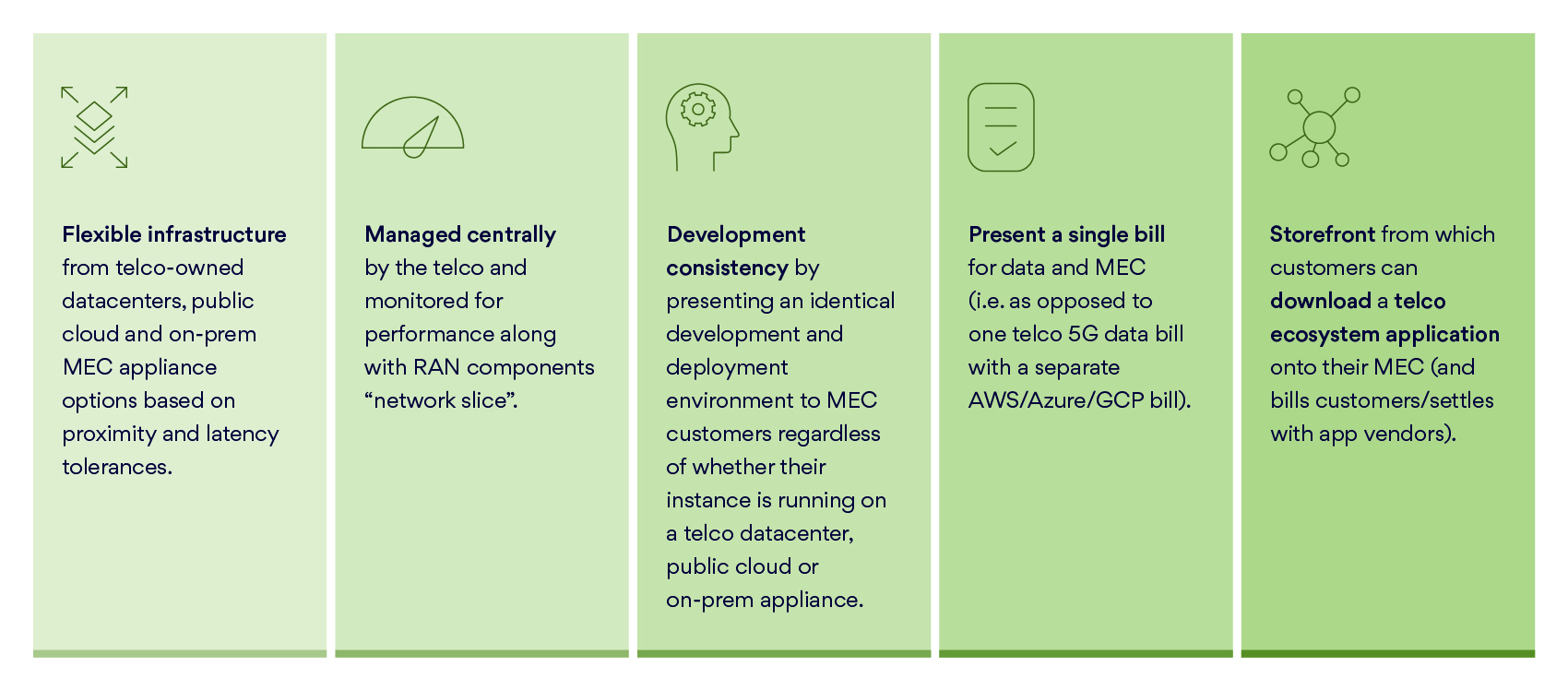The promise of 5G is quickly becoming a reality. The widespread deployments of today are expected to continue for the half decade (or more!) as businesses and consumers alike clamor for improved voice and data services, and new services, across over a dozen industries. With speeds up to 1,000 times faster than 4G, lower latency and the ability to support a multitude of devices simultaneously, the impact of 5G will be extraordinary.
Yet the connectivity benefits brought by 5G are only part of the story. Just as the prospect for 5G-driven business models is tantalizing, many industries recognize that the near instantaneous data processing required by high demand 5G applications (e.g. Video Conferencing, AR/VR real-time gaming, industrial IoT) require a different IT architecture. The issue is delay. With traditional architectures and data must travel from the point of consumption up to the cloud where it is processed, and then back again. Sure this may take only a second or two, but in many use cases this can be far too late. While the 5G evolution in wireless transmission technology will help reduce some of the delay, the remainder needs to be addressed by moving applications and content as close to the point of consumption as possible.
Take manufacturing. Modern factories are increasingly loaded with sensors that monitor every facet of the manufacturing process and feed data into Programmable Logic Controllers (PLCs). The manufacturing process can be optimized in real time in order to avoid the risk of poor quality and lost revenue due to production issues. While Wi-Fi presents sufficient bandwidth, as a technology operating in an unlicensed (and crowded!) spectrum, it cannot be relied upon to connect sensors to local gateways. Wired connectivity can be less problematic but far more costly. Yet dedicated site located 5G base stations managed by telco carriers and coupled with a factory site Mobile Edge Computing (MEC) node is an ideal solution for near-instantaneous data processing.
But this reality presents telco’s with a challenge. They must leverage MEC technology, that in most cases is not owned by them, while committing to strenuous SLA requirements. In other words, they must commit to outcomes without controlling much of the third party infrastructures required to deliver those outcomes. With the introduction of 5G and its associated “network slice” concept, operators must be able to provision resources confidently across both their core network/RAN and third party Mobile Edge Cloud (MEC).
“Edge computing is entering the mainstream as organizations look to extend cloud to on premises and to take advantage of IoT and transformational digital business applications. I&O leaders must incorporate edge computing into their cloud computing plans as a foundation for new application types over the long term.”
According to Gartner’s 2021 Strategic Roadmap for Edge Computing
So how can telcos react? In order to succeed in the 5G market they must provide customers with an integrated and fully certified MEC solution that allows the following:
Persistent has a long history of working closely with both technology providers and telcos. Clients seek us out to leverage our deep expertise in hybrid cloud and telco network management to provide MEC consulting and implementation services as telcos seek to address critical challenges around their 5G deployments. We’re proud to bring a complete MEC solution leveraging IBM Telco Network Cloud, which manages and monitors MECs running on all the major public cloud, and IBM Cloud Satellite-based private remote edge infrastructures. So don’t delay exploring your Mobile Edge Cloud Computing strategy.







